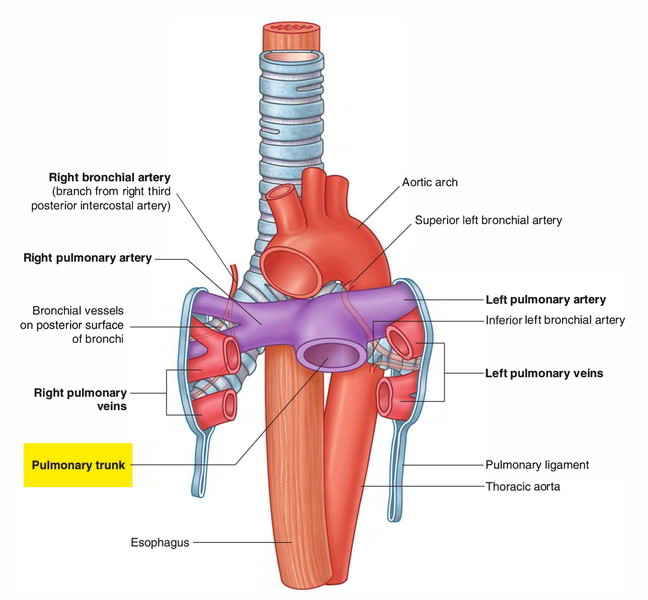Origin
The Pulmonary Trunk is about 5 cm long and originates from the upper part (infundibulum) of the right ventricle in the level of the sternal end of left 3rd costal cartilage.
Course
After arising from infundibulum in the middle mediastinum, it enters backwards and to the left and ends below the arch of aorta and in front of left principal bronchus by dividing into left and right pulmonary arteries.
Relations
Anterior
A. Sternal end of left 2nd intercostal space.
B. Left lung and pleura.
Posterior:
A. Ascending aorta.
B. Commence of left coronary artery.
C. Transverse sinus of pericardium.
To The Right:
A. Ascending aorta.
B.Origin of right coronary artery.
C.Right auricle.
To The Left:
A. Left coronary artery.
B. Left auricle.
Branches
Left and right pulmonary arteries.
The right pulmonary artery is larger compared to the left and is located somewhat at a lower level.
Clinical Significance
Pulmonary Artery Catheterization
Different aspects of cardiopulmonary functions are monitored by the cardiologists by pulmonary artery catheterization.
The catheter is passed successively as follows:
Internal jugular vein/subclavian vein ► Right atrium ► Right ventricle ► Pulmonary trunk ► Pulmonary artery.
Sudden occlusion of pulmonary trunk by an embolus may be a sequel to the thrombosis of deep veins of the calf (viz. femoral vein) or large pelvic vein following operation or immobilization in the sick-bed. When the block is complete, death ensues rapidly.


 (47 votes, average: 4.87 out of 5)
(47 votes, average: 4.87 out of 5)